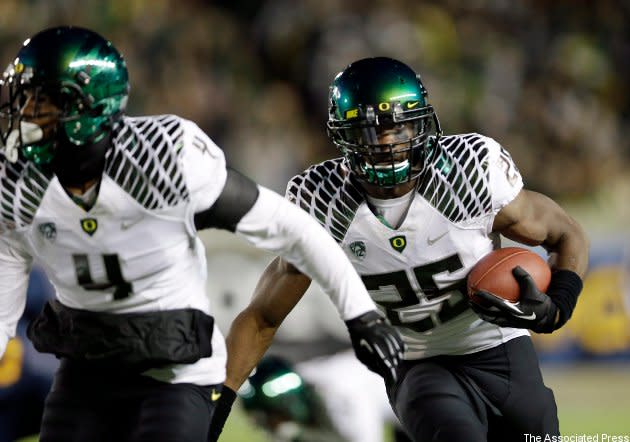CFL changes draft, eliminates NCAA redshirt freshman rule, reduces teams’ uncertainty
One of the biggest challenges with the CFL draft has been evaluating just how much NFL interest there is in particular players. On Friday, the CFL announced changes to the draft that should make this a lot simpler. The most notable is the adjustment to NCAA redshirt freshmen, who have traditionally been eligible for the CFL draft after their junior year, leaving them with another NCAA season before they're NFL-draft eligible. (Well, juniors can declare for the NFL draft, but most of these guys haven't.) CIS players have also had their eligibility changed, though. Here's a rundown of the changes from the CFL website:
For players with non-import status playing in the CIS, they will be eligible to be selected in the CFL Draft three years after completing their first year of CIS eligibility.
Previously, a CIS player was eligible to be selected after their fourth year of post-secondary education.
In addition, the CFL also adjusted the eligibility rules for players with non-import status playing in the NCAA or NAIA. They will now be eligible to be selected in the CFL Draft after their senior season of NCAA or NAIA eligibility.
This eliminates the “Red-Shirt Junior” from the Draft. Starting in 2014, all players eligible to be selected will be able to immediately join the CFL team they are drafted by.
The redshirt junior rule here is particularly notable. Historically, CFL teams have drafted players after they've spent four years in college. For those who started their NCAA careers as true freshmen, like Andy Mulumba (the second-overall CFL draft pick this year who's currently in the NFL with Green Bay), this won't change anything, but those who "redshirted" (or participated in practices only) as freshmen have been previously been CFL-draft eligible while they still have a year of NCAA eligibility left. (In fact, Ottawa was restricted to drafting NCAA redshirt freshmen this year, as the Redblacks don't actually begin play until 2014.)
Thus, CFL teams have had to guess just how much NFL interest there will be in particular players after they play another season of college football. That's led to such memorable CFL draft moments as the B.C. Lions picking Danny Watkins in the first round in 2010 before watching him go in the first round of the NFL draft in 2011, and it's why top prospects like Oregon's Boseko Lokombo have seen such a discrepancy between their CFL prospect ranking and their actual draft position (#1 and #21 respectively in 2013). NFL interest in players will still be a major factor here, but this should help to synchronize the CFL and NFL draft years for NCAA players, and that will make it much easier for CFL teams to effectively gauge southern interest in players and waste less picks in the process.
However, while this makes the draft clearer on the NCAA front, the release left some questions about how eligibility works for NCAA transfers to CIS, CIS transfers to NCAA schools and junior players who go to CIS. CFL director of communications Jamie Dykstra answered some questions on that front for 55-Yard Line Friday. Here's what he had to say:
CIS to NCAA – player would be placed in CFL Draft after their NCAA Senior season (based on his final season of NCAA eligibility).
NCAA to CIS – player would still be eligible three years after his first year of NCAA eligibility. If he redshirted in the NCAA, then came to the CIS, it would be 3 yrs after the first year that he uses a year of eligibility. If he played in the NCAA for two years and used two years of eligibility, he would be draft eligible after two years in the CIS (one year playing after having to sit out a year which is three years after completing his first year of eligibility).
CJFL to CIS - If a player goes from the CJFL to the CIS, he would lose his territorial protection and become eligible for the draft still 3 years after completing his first season in the CIS. However in the event that the player played long enough in the CJFL to use up some CIS eligibility, he will automatically be put in the Draft the year after his eligibility expires (5 of 7 rule) or three years after the first year he dresses in the CIS (whichever occurs first).
On the whole, this should help simplify the Canadian draft, and that's only a good thing for the CFL. It should also help make it so that drafted players are likely to appear in the league sooner, and that will make it much easier to build fan interest in the draft. The Canadian draft has long been a crucial part of how teams build talent, and it's a vital area to pay attention to, but it's been tough to sell to the general public given all the confusing aspects of it and how many highly-drafted players may never make a CFL impact (or may do so five years or more down the road). These changes should help in both those areas, and that makes them a positive from this standpoint.

 Yahoo Sports
Yahoo Sports 


